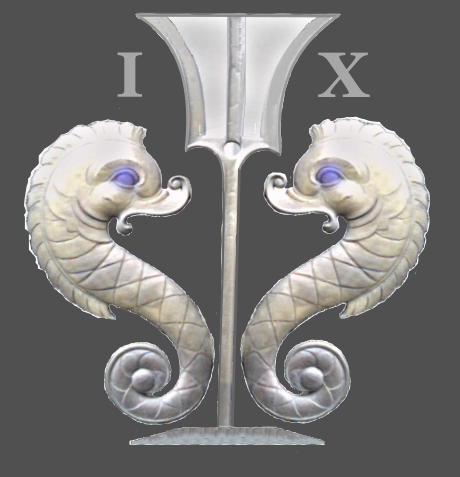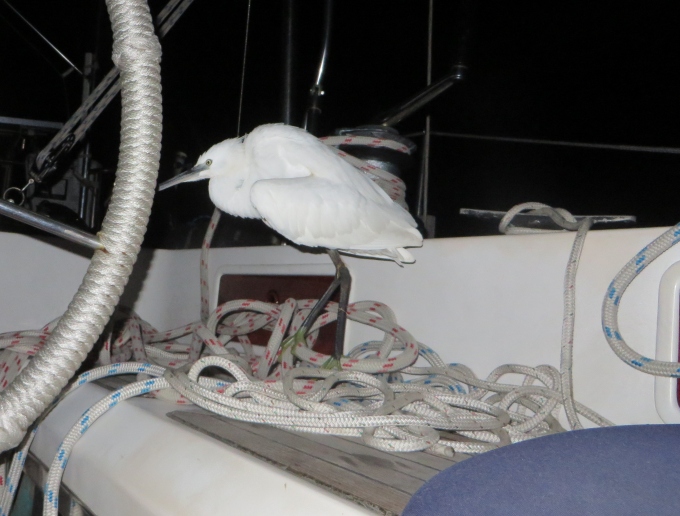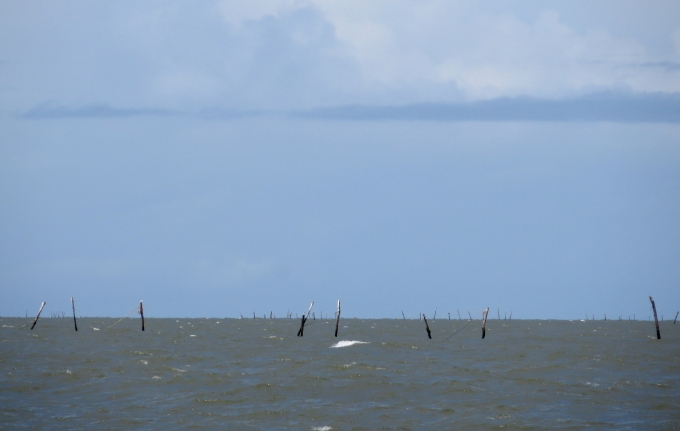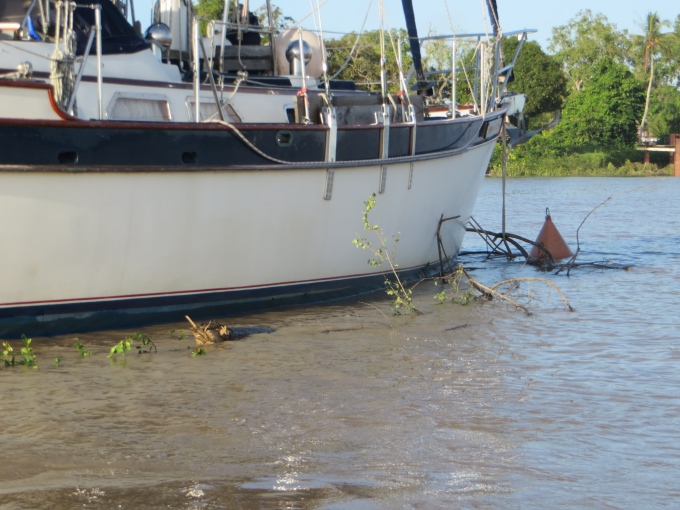Up Guyana's Essequibo River
/It poured cats and dogs during the night. We were up at quarter to dawn to catch the early morning flood tide 40 nm up Guyana's longest river, the Essequibo. The rain had mostly stopped and it was cool, misty and grey at first light. The decks were wet, but clean. We hauled the anchor, heavy and thick with clay and mud. Smoke, sawdust and rich earth smells filled the air.

From the get-go, the passage up the Essequibo was interesting, but required lots of concentration. We had what we assumed were good waypoints (23 of them!), but even the few navigational aids shown on the chart were missing. In the entire, circuitous 50nm trip, we saw only three markers. To add to the challenge, our Navionics charts were off by about 700' N/S and 300' E/W, making it appear at times, as if we were sailing over land.
Sights along the river were colorful and diverse. We saw an array of Hindu prayer flags on a beach and
lots of abandoned, rusting hulks. Several large motor vessels were high and dry on the sand, hopefully using the low tide for repairs and maintenance.
For a good portion of the trip, we had one foot on land and one in the water, i.e. we were very close to the river shore. This afforded the opportunity to observe shore life and take lots of pictures.
The largest port on the river is Parika, low-lying Georgetown's primary port. We watched the ferry from Bartica pass us as it headed to the stelling (a new word for us), the commercial wharf/terminal for ships.
The wharves of Parika were busy with trucks and boats loading and unloading market produce. Bananas seemed to be a bumper crop.
Fishermen, in tiny open boats, worked hard pulling up their nets. We watched men wrestle fuel barrels off riverboats onto small boats. Fast river taxis whizzed past and slow heavily-laden barges, nudged forward by tugs, shared the river with us.
Logging is big industry in Guyana as evidenced by the number of sawmills, mountains of sawdust and volume of cut logs piled along the shores. The distinct, pleasant smell of freshly cut wood permeated the air.
Houses dotted the shore with boats moored nearby, some barely visible through the dense foliage. There are few roads in Guyana, but lots of waterways. Boats are essential transportation here as they were in the other Guianas.
Numerous private piers extended into the river from the shore for ease of loading and unloading. Some were very elaborate and some basic, but all seemed to do the trick. The tidal range here is about 8' (2.5m).
By mid-morning, the grey overcast cleared and white puffy clouds appeared in a blue sky. We motored on a milk chocolate river.
We passed Fort Island, location of the British Guiana's first capital city, and could make out the ruins of the 18th century Fort Zeelandia, built while the Dutch ruled the colony. We noted that this might make a great stop for exploring on our way back downriver. The Dutch were not very imaginative with their fort names evidently. Wasn't the fort in Paramaribo named Fort Zeelandia, too?
The foliage ashore was thick and verdant. There seemed to be a thousand shades of green, accentuated by random streaks of yellow, red and purple blossoms and brightly colored parrots and macaws squawking and flitting between trees. I spotted a toucan, perched high on a dead tree. Our first toucan in the wild ... far away, but easy to identify in profile.
Moths, butterflies, bees, dragonflies and welcome swallows darted by, traveling significantly faster than our 7.5-8 knots. They all eyed us briefly, but obviously discovering nothing of interest, continued on their way. Several of Eddy Egret's kin crowded on the riverside mangroves.
As we neared Bartica, we passed close to Two Brothers Island where musician, Eddie Grant, has built himself quite a palace.
The current provided about a 2.5 knot push for us. The further up the river we progressed, the later the high tide, and the 40 nm quickly passed. A few sharp turns, an adrenaline moment as we transited Rattlesnake Pass and saw the depth meter dip quickly to 9' (2.8m) and there was Bartica. We motored past the Bartica Stelling and were anchored comfortably off the town by Noon. A new country and a new adventure lie ahead.





























